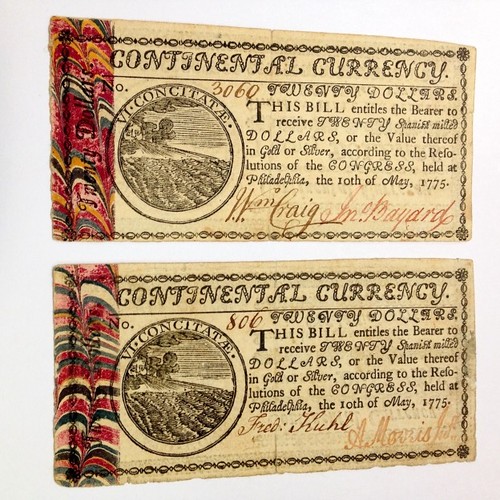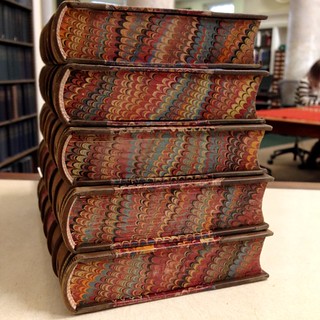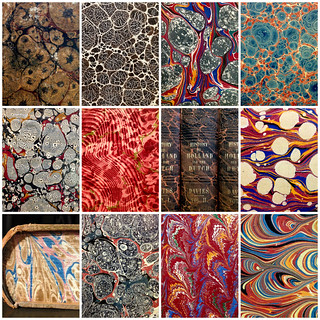
PREV ARTICLE
NEXT ARTICLE
FULL ISSUE
PREV FULL ISSUE
MARBLING ON CONTINENTAL CURRENCY
The Past is Present blog from the American Antiquarian Society has a nice article this week for bibliophiles, about the ancient
and mysterious practice of marbling paper. But there's something here for numismatists, too, so read on! -Editor
We consistently see our IG followers excited by the vivid hues and complex patterns of eighteenth- and nineteenth-century marbling; we even hear from the talented artists who are marbling papers today. People have posted countless comments noting the beauty of marbled papers and expressing enthusiasm for the #MarbledMonday feature. But what has inspired our audience’s “marbled madness”—this fascination with an often-overlooked book art? A lot of it has to do with the aesthetic appeal of marbling, for sure. The intricate and varied patterns certainly catch the eye. But I think part of the attraction comes from the mystery of marbled papers, edges, and cloths. How could an artist, working in the eighteenth or nineteenth centuries, produce such vibrant and extraordinarily complicated designs, over and over again? These patterns have repeating elements that are remarkably precise and symmetrical: How was this done, we wonder, with old-fashioned tools? Even knowing the answer to this question, the art still seems somewhat like sorcery.
The earliest examples of American marbling can be traced to the 1760s, but the art form did not become an industry until the first half of the nineteenth century. For this reason, most of the marbled papers in the AAS collection are from the 1830s and beyond. There are a few notable exceptions, however, including pieces of Revolutionary currency that used marbling as an anti-counterfeiting measure—an innovation championed by none other than Ben Franklin. 
To read the complete article, see:

Wayne Homren, Editor The Numismatic Bibliomania Society is a non-profit organization promoting numismatic literature. See our web site at coinbooks.org. To submit items for publication in The E-Sylum, write to the Editor at this address: whomren@gmail.com To subscribe go to: https://my.binhost.com/lists/listinfo/esylum All Rights Reserved. NBS Home Page Contact the NBS webmaster 
|

